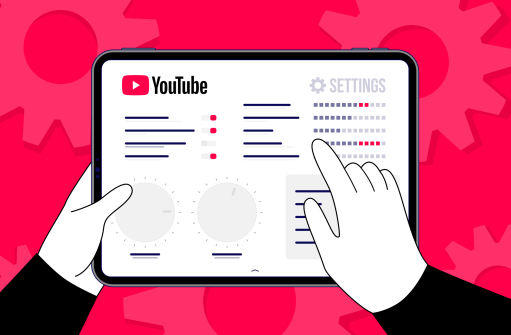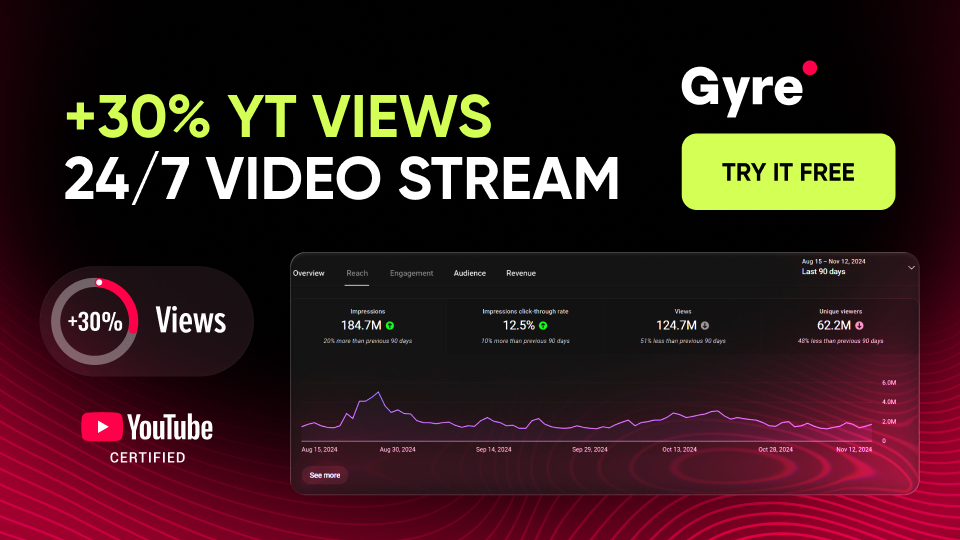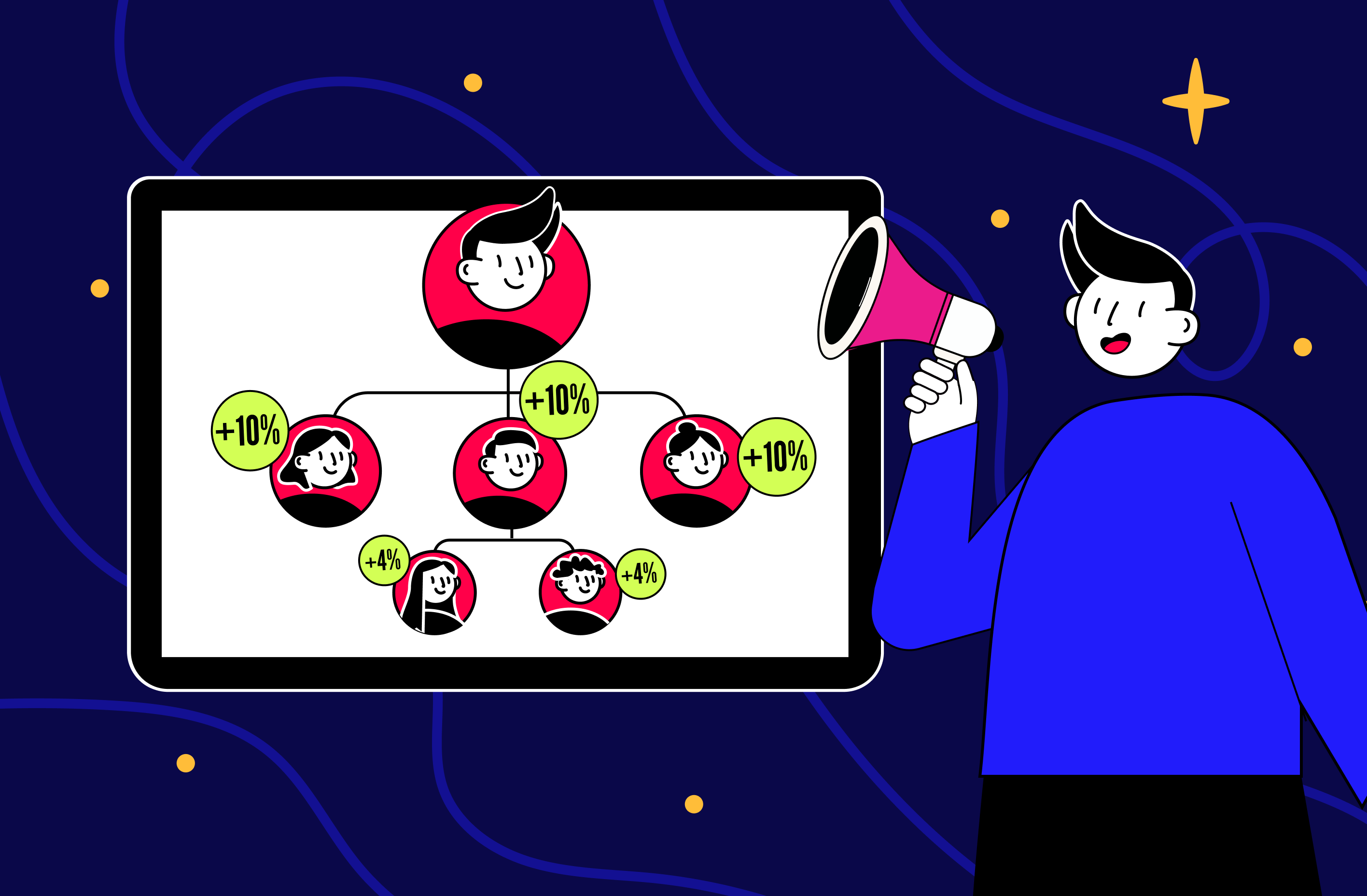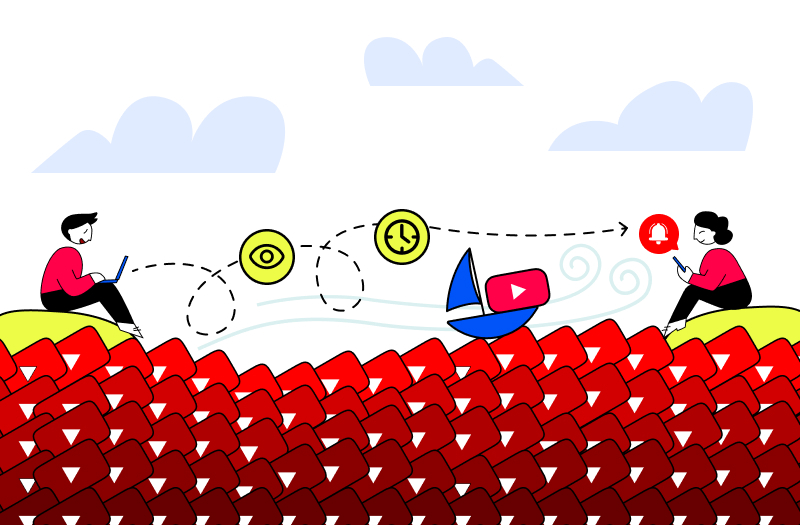Upload Like a Pro: The Ultimate Checklist
To optimize YouTube uploads, let's start with the basics:
- Come up with a relevant title — it should be concise (preferably up to 53 characters), clearly reflect the topic of your content, and contain keywords.
- Continue with a more detailed description. Here, you also need to use keywords and try to explain your video more fully.
- Designing eye-catching icons is necessary for those who want to popularize their content.
- Create playlists. Your content should be well-organized and structured to make it easier for your audience to find what they want.
- Use chapters. YouTube usually generates them automatically, but it makes sense to do it manually to better control your audience's navigation.
The First Upload Setting Most Creators Miss
Now, let's dive into the specifics of the title — this will likely be the main aspect of keeping your viewers' attention before they run your video. In particular, in addition to brevity and the presence of keywords in it, it should be engaging. For this, you will have to think about what exactly will make your viewers distinguish your video from others on the same topic.
Writing Click-Worthy Titles That Get Results
To create a title that is hard to pass by, you need to follow simple rules – use numbers if possible (if not, at least mention the current year as an option), and try to formulate it as a question. And don't forget the settings tips we mentioned earlier (i.e., consider keywords, length restrictions, and informativity – that is, no clickbait).
Crafting Descriptions That Drive Discovery
A few more words about the description — it directly affects the discoverability of your video within the platform. To do this, try to hook your viewer from the first two words — they are the ones that are displayed in full in the search results. Also, do not forget about keywords (they should be evenly distributed throughout the text) and insert links to your other videos that are relevant to this one (or to other social networks if there are any).
The Thumbnail Formula That Stops the Scroll
Your thumbnail can also decide whether your video gets run, so you shouldn’t tick the YouTube channel settings for uploading until you’ve created something that will wow you. In particular, you’ll need to create a high-resolution image, overlay it with clearly visible and contrasting text that complements the title, and maintain a consistent style (color scheme and fonts) to ensure your content is recognizable. You can read more about what great thumbnails should be.
One Upload Setting That Could Expand Your Reach
There is also a YouTube advanced setting that can positively affect your reach – this is sharing links to your video on other social networks. Also, you should not neglect to interact with the audience through comments and collaborate with other content creators.
The Upload Setting That Might Be Killing Your Views
YouTube video upload settings can blemish your channel if not used correctly. For example, if you mark your video as “For kids” but it does not contain anything relevant, this risks limiting your monetization and discoverability. The same applies to age restrictions since this also affects how many viewers can find your video in their recommendations and global search.
Paid Promotions: Avoid This Common Mistake
If your content includes paid promotions, you must indicate this by turning on the corresponding switch in the uploading videos settings (it's called "Promotion"). If you make such YouTube upload mistakes, the platform can fine you because you will potentially mislead the audience.
When ‘Keeping It Real’ Risks Demonetization on YouTube
Remember that how you perceive your content may differ from how your audience will perceive it. To do this, double-check its compliance with YouTube's community guidelines and analyze it for sensitive topics that may be offensive or painful for your viewers. Otherwise, it risks leading to demonetization.
How to Use Chapters to Increase Engagement
Chapters positively impact user experience, as they allow viewers to find what they are looking for faster in long videos. They can be created automatically (if you choose the appropriate settings) or manually (this is the preferred option, as it will provide more accurate navigation). Also, do not forget to add relevant keywords to their titles – this also affects YouTube video visibility and audience engagement.
The Overlooked Setting That Limits Travel Content
If your YouTube blog is focused on traveling, you should consider the following two aspects:
- Activate the “Video location” feature to highlight the places in your video.
- Add tags to help your audience find other videos on similar topics.
What Are Automatic Concepts — and Should You Use Them?
Knowing how automatic concepts work can be very helpful in promoting videos to educational channel owners. In particular, this is an experimental YouTube feature that independently identifies key terms mentioned in your video and offers them for placement in the description. It is also aimed at SMB representatives so that it would be easier for them to promote their businesses on new digital platforms.
Do You Still Need Tags in 2025? Here’s the Truth
Many people think using tags is outdated, but at least on YouTube, it is still effective. Specifically, it is crucial for newborn channels, where their creators should not miss any opportunity to increase their visibility, as well as for those who create content for narrow-focused sectors (usually, their audiences are guided by tags).
Hidden Settings That Quietly Hurt Your Views
You should be well aware of the default settings — they can both help and harm you. These include permission to embed your videos (for third-party publication on third-party platforms) and the ability to create remixed content (this means that you allow your viewers to create Shorts from your long-form videos).
Who Actually Owns Your Content on YouTube?
If you are familiar with copyright, you should not have any problems. However, even experienced content creators make mistakes, so before your video is posted, you will need to check whether the music used in your video and other elements (such as inserts of other people's videos, texts, etc.) violate someone's copyright. In the same way, you need to know about your rights – the fact is that uploading a video to YouTube automatically means that you give YouTube permission to demonstrate and distribute your content.
Embedding: The Secret Growth Channel
Embedding your videos on external sites can also increase their views. For this reason, you need to enable this option in the YouTube video upload settings before you post the video on the platform. This recommendation is especially relevant for content creators who create educational and shocking content. In this case, the likelihood of your video being published on someone's blog or a news aggregator will be high.
Shorts as a Traffic Funnel for Long-Form Videos
Suppose you already have long-form videos on your channel. In that case, you can trim and concatenate the most interesting parts to publish them as Shorts, which are guided by algorithms similar to TikTok and Instagram (Reels). To make this strategy a winning one, be sure to encourage Shorts viewers to watch the full version of your videos.
Choosing the Best Category for Your Video
An equally important aspect of the settings is the correct choice of the category to which your content belongs. The platform thus ensures your videos’ visibility for viewers who have already watched and liked something similar.
How Comments Can Supercharge Viewer Engagement
Giving your audience access to comments increases their engagement because it shows no barrier to them and that you are open to suggestions on your YouTube video optimization. To do this, you must check the corresponding box in the settings. Additionally, you can set moderation settings to maintain a healthy atmosphere in your comments.
Turning Your Video into a Fundraising Engine
If your channel has 10,000 or more subscribers, you will have access to the fundraising option for charitable initiatives. It is essential to remain transparent with your viewers to convince them that their money will be spent on good causes.
Monetization Myths That Keep Creators Stuck
Many content creators believe the more subscribers they have, the more extensive their monetization opportunities. However, this is not a mandatory condition. Covering a narrow niche can still make a lot of money because an interested audience will subscribe to you. However, your channel and its content must comply with YouTube policies for everything to work out the way you dream.
Another myth is that demonetization means a complete absence of advertising in your videos. The platform will still show advertising – you won't get paid for it, regardless of your YouTube monetization settings.
Ad Suitability: Why It Matters More Than Ever
If you publish advertising content, you must first pass Self-Certification and understand your rating status. YouTube is very strict about this, so you must indicate the appropriate icons. Otherwise, incorrect marking can lead to fines from the platform, and your video will be removed.
End Screens & Cards: Don’t Miss This Opportunity
Using YouTube end screens and cards has a positive effect on the overall watch time of your channel, as it helps popularize your previous videos. The key is to leave links to videos on relevant topics to offer viewers something they are already interested in.
Did Your Video Pass the Content Checks?
Before publishing your content, the platform independently checks it for compliance with internal policies, particularly copyright compliance and uniqueness. Otherwise, your video may not be allowed to be published or deleted after some time.
How to Schedule Like a Pro for Maximum Views
The time your video is published is essential, and that's a fact. If you post your content during peak hours, it will have a better chance of getting more views in the first days after publication. You can help find these peak hours through YouTube analytics and also by finding general recommendations.
Why You Shouldn’t Hit ‘Publish’ Immediately
You can make the video public a little later—there is no need to rush, especially at first. By setting the mark "Share privately" in the YouTube upload settings, you can watch the video yourself and give it to your friends to rate. Thus, you will be sure that everything looks as you intended and that your video does not trigger anyone.
Final Checks Before You Go Live
Our final recommendation in YouTube upload guidelines is always to consider your viewers’ feedback (you can understand it by likes, views, and comments). It would also be a good idea to ask your audience directly what they want to see in your following videos. Only such productive interaction can grow your YouTube channel (and, therefore, monetization).







